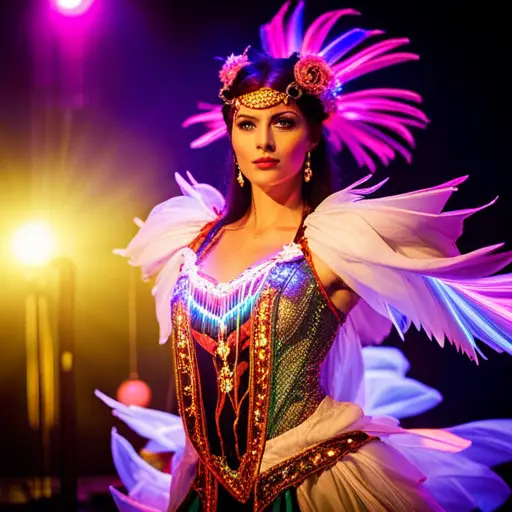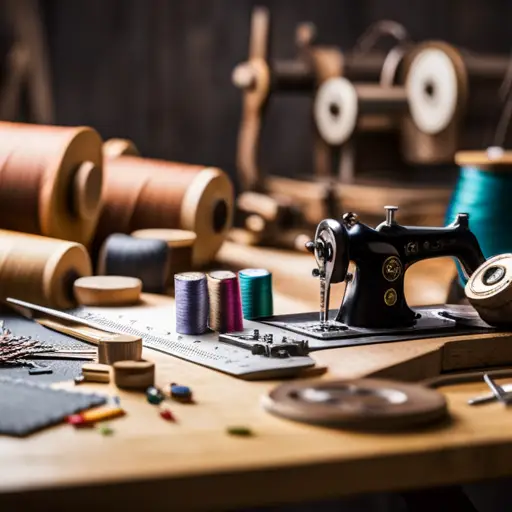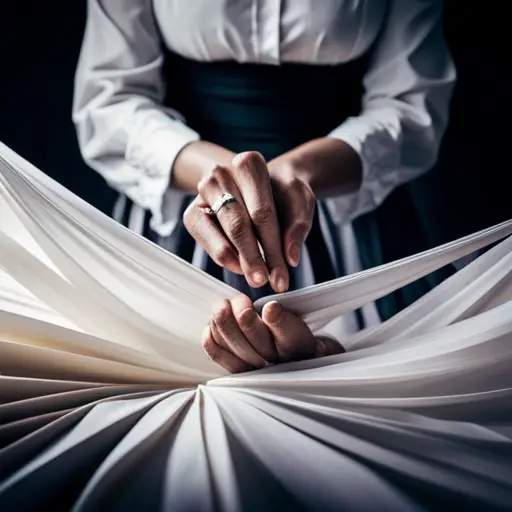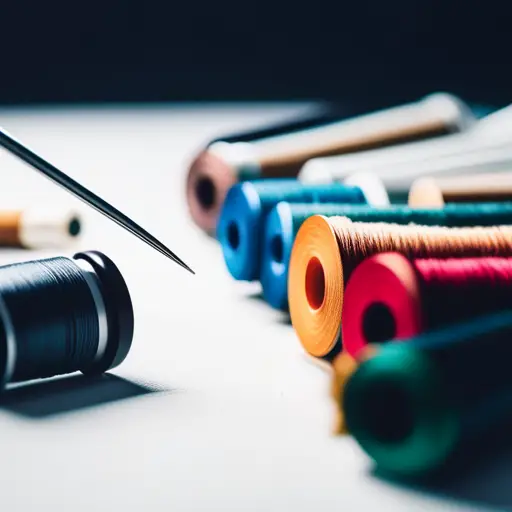Understanding Different Costume Styles and Eras
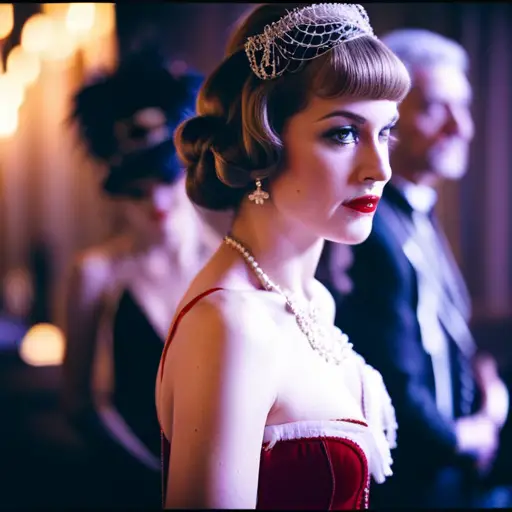
Ever wondered how fashion has evolved over the centuries? From the opulence of ancient civilizations to the elegance of the Victorian era, costume styles and eras offer a fascinating glimpse into the history of human expression.
This article explores the rich tapestry of fashion, from classical attire to retro glamour, providing insight into the cultural and societal influences that have shaped our sartorial choices.
Join us on a journey through time and discover the diverse world of costume design.
Ancient and Classical Costumes
Ancient and classical costumes provide insight into the clothing and attire worn by people in various historical civilizations and societies. The Roman and Greek attire, known for its elegance and sophistication, consisted of draped garments such as the toga and chiton. Roman clothing was influenced by the Greeks but evolved to reflect the status and wealth of the wearer, with the use of intricate embroidery and luxurious fabrics.
In contrast, ancient Egyptian fashion was characterized by lightweight, linen garments suited to the hot climate. The attire often featured elaborate headdresses, jewelry, and makeup, reflecting the emphasis on aesthetics and personal adornment in Egyptian society.
The clothing of these civilizations not only served functional purposes but also conveyed social, cultural, and religious meanings. The intricate draping and accessories in Roman and Greek attire symbolized social status and were integral to the visual language of power and authority. On the other hand, ancient Egyptian fashion emphasized the importance of symbolism and spirituality, with clothing and jewelry often bearing significant religious and mythological motifs.
Studying these ancient and classical costumes provides valuable insights into the historical, social, and cultural contexts of these civilizations.
Medieval and Renaissance Attire
The attire of the Medieval and Renaissance periods reflected distinct social hierarchies and cultural sensibilities, with clothing serving as a means to convey status and identity. During the Medieval era, fashion was influenced by the feudal system, and clothing was used to signify one’s social standing. On the other hand, the Renaissance period saw a revival of classical art, literature, and learning, which greatly influenced clothing styles. Both periods are known for their distinctive silhouettes and intricate designs, with each era contributing to the evolution of fashion.
| Medieval Fashion | Renaissance Clothing | Influence on Modern Fashion |
|---|---|---|
| – Rich fabrics such as velvet and silk | – Elaborate and ornate clothing | – Influence on high fashion and couture |
| – Differentiated clothing for nobility, clergy, and peasants | – Introduction of tailored garments | – Continued inspiration for costume design in movies and theatre |
| – Layered garments such as tunics, cloaks, and hoods | – Emphasis on the natural waistline | – Incorporation of corsets and ruffs in contemporary fashion trends |
The influence of Medieval and Renaissance attire on modern fashion cannot be overstated, as their unique styles continue to inspire designers and artists across the globe.
Baroque and Rococo Fashion
During the Baroque and Rococo periods, fashion underwent significant changes, reflecting the opulence and extravagance of the era.
Baroque fashion was characterized by opulent designs, elaborate embroidery, rich fabrics, and luxurious embellishments. Women’s dresses featured fitted bodices and full skirts, often made with heavy brocades and velvets. The attire was completed with lace trims, intricate embroidery, and ornate accessories, showcasing the wealth and status of the wearer.
In contrast, Rococo fashion emerged with a shift towards lighter, more whimsical and playful styles. Pastel colors, delicate floral patterns, and frothy, flounced skirts became popular, reflecting a more lighthearted and romantic approach to dressing. Women’s gowns were adorned with ribbons, bows, and ruffles, emphasizing a more ethereal and feminine aesthetic.
Men’s fashion also evolved during this period, with the introduction of the three-piece suit and the adoption of more refined and embellished clothing.
The Baroque and Rococo periods left a lasting legacy of opulence, extravagance, and artistic expression in the world of fashion.
Regency and Victorian Elegance
The evolution of regal fashion from the Regency era to the Victorian era is a captivating exploration of changing styles and societal influences.
The distinctive silhouette and intricate details of Regency and Victorian garments offer a rich tapestry of historical and cultural significance.
From the elegant empire waistlines of the Regency period to the opulent bustles and voluminous skirts of the Victorian era, each style reflects the values and aesthetics of its time with remarkable precision and artistry.
Regal Fashion Evolution
In the 19th century, Regency and Victorian fashion evolved, reflecting the shifting cultural and societal norms of the time. The regal fashion of this era was heavily influenced by historical factors, including the Napoleonic Wars and the Industrial Revolution.
To create a vivid image of this evolution, one can envision:
-
Regency elegance: Women donned high-waisted, flowing gowns, inspired by classical Greek and Roman styles, while men favored tailcoats and top hats, exuding sophistication and refinement.
-
Victorian opulence: The era saw a transition to more structured and ornate attire, with women embracing voluminous skirts and corsets, and men adopting frock coats and cravats, symbolizing the emphasis on formality and decorum.
-
The incorporation of intricate lace, rich fabrics, and elaborate embellishments further epitomized the grandeur and luxury associated with regal fashion.
This evolution sets the stage for a deeper exploration of the distinctive silhouette and details of these intricate styles.
Distinctive Silhouette and Details
How did the distinctive silhouette and intricate details of Regency and Victorian fashion reflect the evolving cultural and societal norms of the 19th century? The distinctive silhouettes of the Regency era were characterized by high waistlines and columnar skirts, reflecting the cultural emphasis on simplicity and classical ideals. In contrast, the Victorian era saw a shift towards voluminous skirts, corseted waists, and elaborate embellishments, mirroring the societal emphasis on opulence and femininity. These details were not merely fashion trends; they held historical significance, symbolizing the changing roles and expectations of women in society. The evolution of these silhouettes and details was deeply intertwined with cultural influences, reflecting the shifting ideals of beauty, femininity, and societal status.
| Regency Fashion | Victorian Fashion | Cultural Significance |
|---|---|---|
| High waistlines, columnar skirts | Voluminous skirts, corseted waists | Emphasis on simplicity and classical ideals versus opulence and femininity |
Edwardian and Belle Époque Styles
The Edwardian era, spanning from 1901 to 1910, was characterized by a departure from the restrictive Victorian fashion. Edwardian fashion was marked by a more relaxed silhouette, showcasing a S-curve shape and an emphasis on the ‘gibson girl’ look.
On the other hand, Belle Époque fashion, which translates to ‘beautiful era,’ was a time of opulence and extravagance, with an emphasis on luxurious fabrics, elaborate ornamentation, and the hourglass silhouette.
Both of these styles have had a lasting impact on modern fashion, with designers often drawing inspiration from the elegance and sophistication of the Edwardian and Belle Époque eras.
Edwardian Fashion Overview
During the Edwardian era, fashionable attire for both men and women was characterized by a sense of elegance and opulence. This period marked an evolution in Edwardian fashion, with a transition from the restrictive Victorian styles to the more relaxed and elegant Belle Époque fashion.
The clothing of this time exuded an air of sophistication and refinement, with women’s fashion featuring S-shaped silhouettes, high necklines, and elaborate embellishments. Men’s fashion embraced tailored suits with high-waisted trousers and structured jackets.
The use of luxurious fabrics such as silk, lace, and velvet further emphasized the opulence of Edwardian fashion. Accessories like parasols, gloves, and elaborate hats were essential to complete the look, adding to the overall Belle Époque elegance of the era.
Belle Époque Characteristics
One defining element of Belle Époque fashion, which encompassed both the Edwardian and Belle Époque styles, was the emphasis on elegance and opulence in attire for both men and women. This era, lasting from the late 19th century to the early 20th century, was influenced by cultural shifts and technological advancements, leading to a significant evolution in fashion. Belle Époque fashion was characterized by its luxurious fabrics, intricate detailing, and structured silhouettes, reflecting the societal impact of prosperity and leisure. Women’s fashion featured S-shaped corsets and elaborate hats, while men’s fashion embraced tailored suits and top hats. The Belle Époque era was a time of artistic and cultural flourishing, and its fashion reflected the opulence and optimism of the period.
| Belle Époque Characteristics |
|---|
| Luxurious Fabrics |
| Intricate Detailing |
| Structured Silhouettes |
| S-shaped Corsets |
| Tailored Suits |
Influences on Modern Fashion
Influences from the Edwardian and Belle Époque styles continue to impact modern fashion, shaping contemporary trends and design elements. The celebrity influences of the Edwardian era, such as the iconic styles of King Edward VII and Queen Alexandra, have left a lasting impression on modern red carpet and high fashion looks. Cultural inspiration from the Belle Époque, with its emphasis on opulence and luxury, can be seen in the elaborate and ornate detailing of modern evening gowns and formalwear. Furthermore, the increasing focus on eco-friendly fashion and sustainable design in the modern era has led to a resurgence of interest in the Edwardian emphasis on natural fibers and handcrafted textiles. This intersection of historical influence and contemporary values continues to shape the fashion landscape today.
As we delve into the subsequent section about ‘art deco and roaring twenties glamour’, it becomes evident that the evolution of fashion is deeply intertwined with cultural, historical, and societal influences.
Art Deco and Roaring Twenties Glamour
Characterized by opulence and luxury, the Art Deco and Roaring Twenties Glamour era exudes a sense of extravagance and sophistication in its fashion and design. Art Deco, with its geometric shapes and lavish ornamentation, infused Hollywood glamour into the fashion world. The Jazz Age fashion, influenced by the iconic novel ‘The Great Gatsby,’ embraced drop-waist silhouettes, intricate beading, and fringe details, reflecting the carefree spirit and prosperity of the time. Gatsby inspired costumes became synonymous with the era’s opulence, showcasing luxurious fabrics and embellishments that epitomized the roaring twenties’ exuberant parties and social extravaganzas. The allure of this period’s fashion lies in its ability to capture the essence of a society experiencing newfound freedom and creativity, resulting in a distinctive and unforgettable style.
Transitioning into the subsequent section about mid-century and retro fashion, the Art Deco and Roaring Twenties Glamour era set the stage for a shift towards more simplistic and functional styles. The following era witnessed the evolution of fashion, influenced by the changing societal dynamics and global events, leading to the emergence of mid-century and retro fashion trends.
Mid-Century and Retro Fashion
During the mid-20th century, fashion underwent a shift towards more simplistic and functional styles, paving the way for the emergence of mid-century and retro fashion trends.
Mid-century fashion embraced clean lines, A-line silhouettes, and bold patterns. Women’s fashion during this era was characterized by the hourglass silhouette, popularized by iconic figures like Marilyn Monroe. The mid-century pin-up look, with its high-waisted bottoms and fitted tops, exuded femininity and confidence.
On the other hand, retro rockabilly fashion, influenced by the music and subculture of the 1950s, featured leather jackets, full skirts, and polka dots, epitomizing rebellion and edginess.
Men’s mid-century fashion embraced tailored suits with narrow lapels and cuffed trousers, while the retro rockabilly style for men included rolled-up jeans, white T-shirts, and leather jackets, exuding a rugged and rebellious charm.
Both mid-century and retro fashion continue to inspire contemporary trends, showcasing the enduring influence of this iconic era on the fashion landscape.
Frequently Asked Questions
How Did Costume Styles Vary Between Different Social Classes During These Eras?
Throughout different eras, costume styles varied significantly between social classes. Social hierarchy dictated clothing distinctions, influencing fashion evolution. These variations had a profound cultural impact, reflecting societal norms, power dynamics, and economic disparities.
What Were the Common Materials and Fabrics Used in Creating These Historical Costumes?
The common materials and fabrics used in creating historical costumes varied greatly, reflecting the influences of social classes, fashion trends, and available resources. Each era saw distinctive choices in textiles, with undergarments and accessories also playing significant roles.
What Were the Influences on Costume Styles During These Eras, Such as Cultural, Political, or Technological Developments?
Costume styles throughout history were influenced by cultural, political, and technological developments. These included social class variations, regional fashion trends, and the availability of fabric and materials. Undergarments and accessories also played a significant role in shaping fashion trends.
How Did Fashion Trends in One Region or Country Differ From Those in Another During These Time Periods?
Fashion trends in different regions during historical periods were influenced by unique cultural and economic factors. Cultural influences such as traditions, beliefs, and societal norms, and economic impact like trade routes and financial prosperity, shaped distinct styles.
What Were the Typical Undergarments and Accessories Worn With These Historical Costumes?
Undergarment styles and fashion accessories play a pivotal role in historical costumes. Lingerie trends and historical fashion accessories varied widely across different eras and regions, serving both functional and aesthetic purposes, offering a fascinating glimpse into past fashion practices.
Conclusion
In conclusion, the evolution of costume styles and eras offers a rich tapestry of historical and cultural significance. Each era’s fashion reflects the values, beliefs, and societal norms of its time, providing a window into the past.
One interesting statistic to note is that the global costume industry is estimated to be worth over $1.7 trillion, underscoring the enduring fascination and importance of costume styles throughout history.

